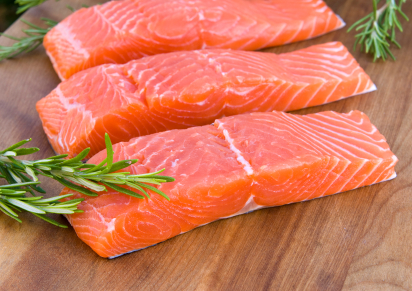What is Astaxanthin?
I’ve been hearing amazing things about a new antioxidant called astaxanthin. What is it?
Astaxanthin is a member of the carotenoid family (which also includes beta-carotene), and it’s one of the most powerful antioxidants on earth. The best food source for astaxanthin is wild salmon, whose red color is the result of a diet high in krill, small crustaceans that are loaded with astaxanthin – one of the selling points of krill oil supplements. (Farmed salmon, unfortunately, don’t’ have much astaxanthin, as they usually get their color from food dye). Other “pink/red” fish or shellfish such as lobster and shrimp also get their color from the astaxanthin-rich plankton and algae they typically dine on. (So do flamingos, but don’t eat them!)

A number of studies suggest that astaxanthin may have positive effects on cancer, diabetes and the immune system, and may even help protect the brain and lower blood pressure. It’s also a natural anti-inflammatory, which is important since inflammation is involved in every major degenerative disease we know of from Alzheimer’s to heart disease. Astaxanthin also protects the eyes and may reduce the likelihood of cataracts.
Astaxanthin is now available as a supplement. If you take it, a good dose is about four to 10 milligrams per day. It’s fat soluble, so be sure to take it with some fat-containing food, or just get it naturally from wild salmon, which already contains a nice dose of the best fats in the world, omega-3s. Four ounces of wild salmon contain about 4.5 milligrams of astaxanthin.

